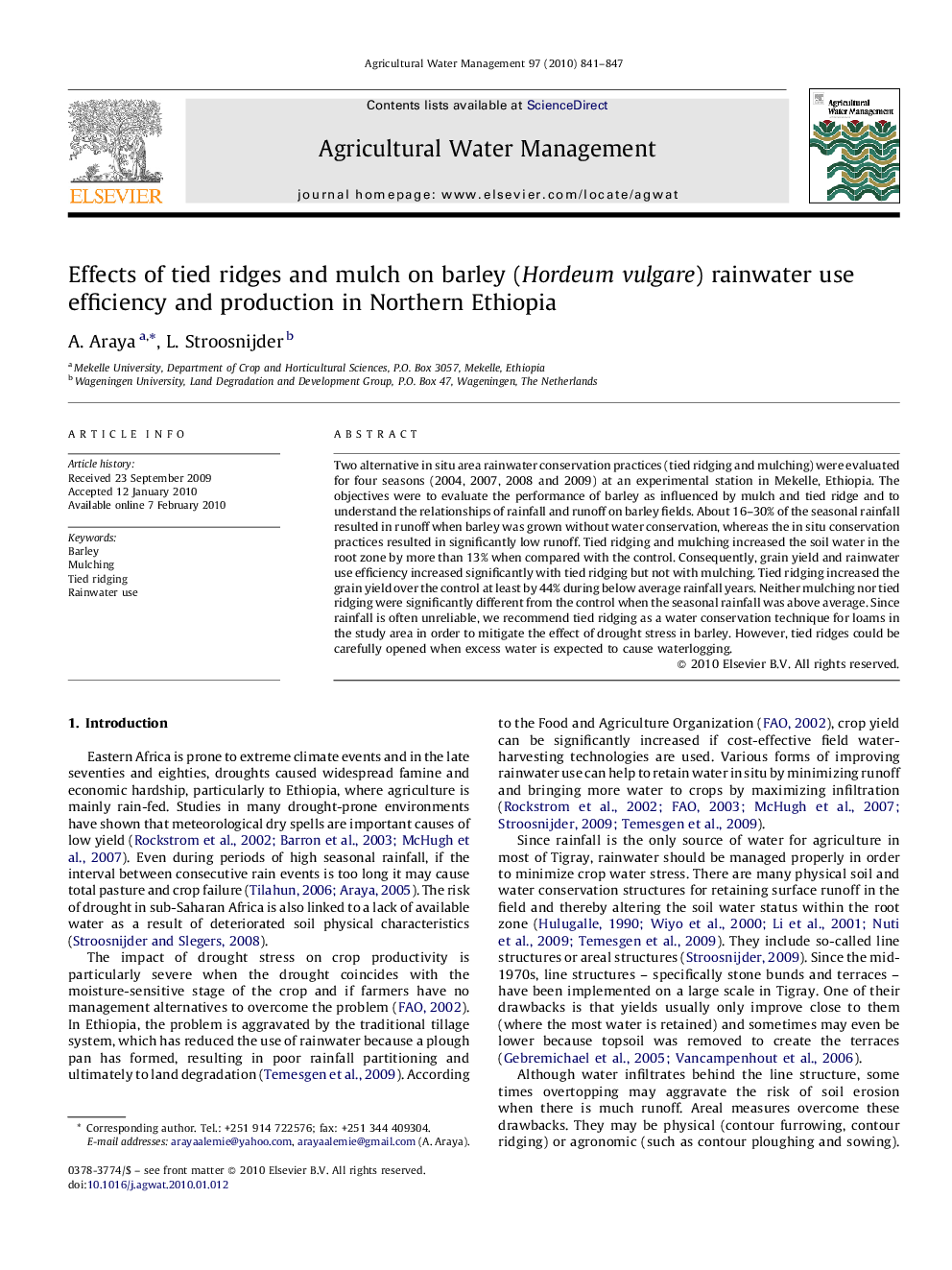| Article ID | Journal | Published Year | Pages | File Type |
|---|---|---|---|---|
| 4479893 | Agricultural Water Management | 2010 | 7 Pages |
Two alternative in situ area rainwater conservation practices (tied ridging and mulching) were evaluated for four seasons (2004, 2007, 2008 and 2009) at an experimental station in Mekelle, Ethiopia. The objectives were to evaluate the performance of barley as influenced by mulch and tied ridge and to understand the relationships of rainfall and runoff on barley fields. About 16–30% of the seasonal rainfall resulted in runoff when barley was grown without water conservation, whereas the in situ conservation practices resulted in significantly low runoff. Tied ridging and mulching increased the soil water in the root zone by more than 13% when compared with the control. Consequently, grain yield and rainwater use efficiency increased significantly with tied ridging but not with mulching. Tied ridging increased the grain yield over the control at least by 44% during below average rainfall years. Neither mulching nor tied ridging were significantly different from the control when the seasonal rainfall was above average. Since rainfall is often unreliable, we recommend tied ridging as a water conservation technique for loams in the study area in order to mitigate the effect of drought stress in barley. However, tied ridges could be carefully opened when excess water is expected to cause waterlogging.
